Social Distancing Art Walk
Enjoy the beautiful weather and a self-directed artwork tour! The Silver Spring Arts & Entertainment District has some amazing public art. With over 80 pieces it is hard to know where to begin. Use this tour to start your journey.
To learn about other pieces of artwork visit Public Art in Silver Spring.
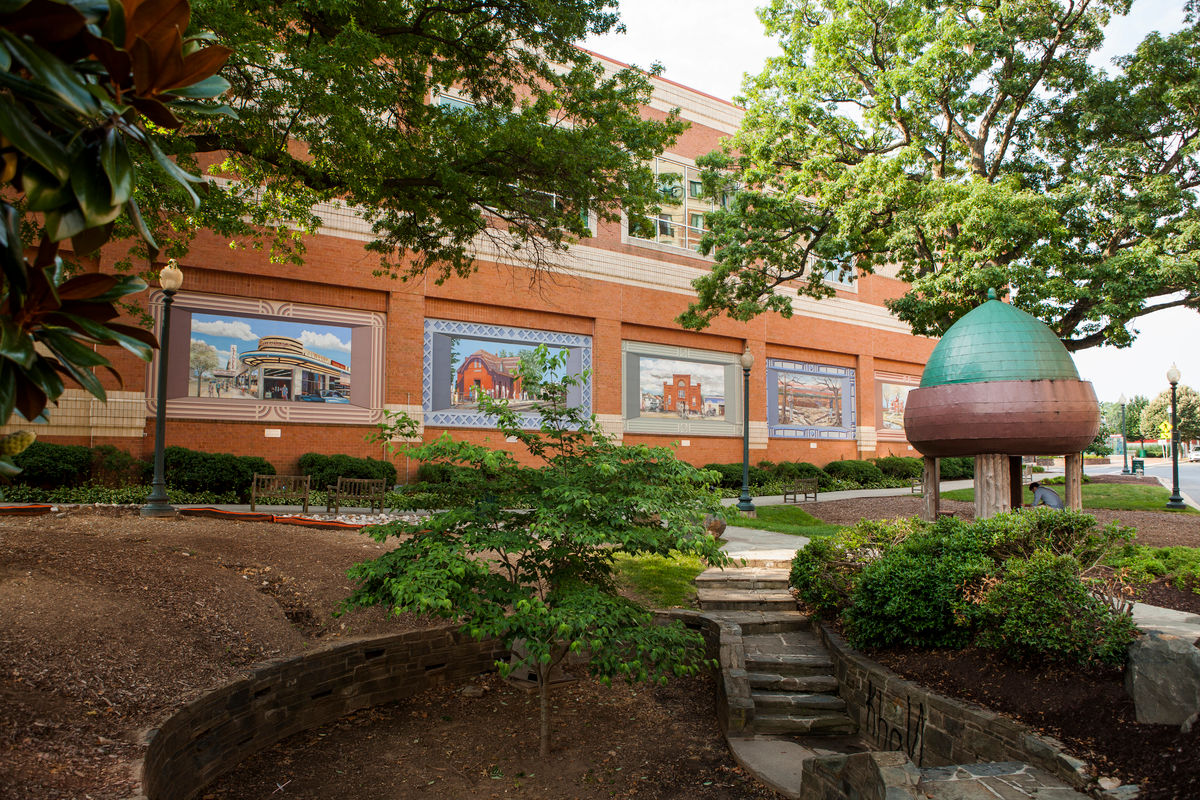
Acorn Park
Acorn Park is all that remains of Francis Preston Blair’s estate, “Silver Spring,” named after his discovery in 1840 of a nearby mica-speckled spring. This park might be small, but it is chock-full of good stuff to see. Nestled up to the first Silver Spring Discovery building, DCTC, is a quaint little park with an acorn gazebo and beautiful murals. Previously the Caldor Building, it was a business that commissioned the five-panel mural by artist Mame Cohalon and MNCPPC restored the gazebo (artist unknown) and park.

Bio Wall
The visit to the bio wall is best at night. United Therapeutics has a courtyard on Cameron where you can catch a nighttime showing of a science “movie” and watch the DNA inspired light show on the UT bridge. Measuring 16’x9’, this HD video display shows changing life sciences programming. Kick back and relax on sculptural seating designed by artist Elizabet Cabeza and enjoy the harmonious music playing in the night. Before you leave, use your phone to read the QR codes on the top of each of the courtyard lights, they each represent a different element.
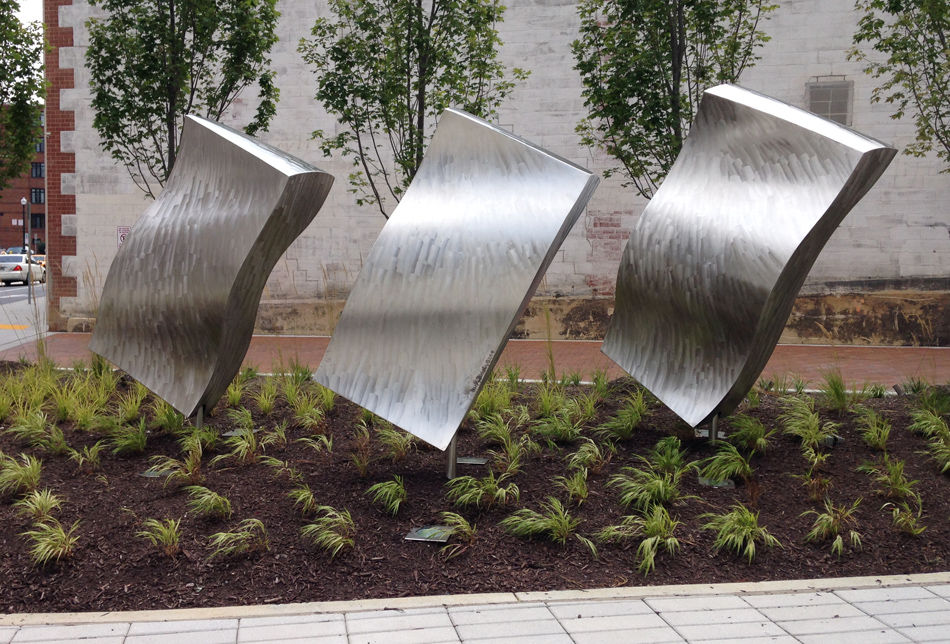
Botero Ballerinas
This stainless steel wind kinetic sculpture by Barton Rubenstein is a celebration of life and community. The gracefully moving elements rotate in the slightest breeze, and create spectacular changing light patterns on their stainless steel surfaces. With curvy shapes evoking the feminine form, these ballerinas interact with slow rhythmical movements, symbolizing the dynamic nature of human interaction. Created for The Premier Apartments.
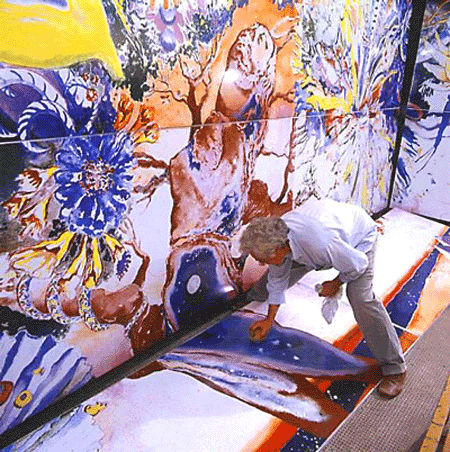
A Brushstroke of Discovery
Artist Narcissus Quagliata was given the commission to execute the 170 foot exterior mural for the former Discovery Communications Headquarters Building. A vibrant silkscreen on enamel overlaying steel, the mural is a highly figurative, monumental work that invites the viewer to reflect the variety of its forms, the history of our very planet, and on the uniqueness of life itself.

Coastline
Watch the tide come in at Coastline in the NOAA courtyard. Known to locals as “the wave pool,” Coastline is actually an educational tool that exemplifies the mission of the National Oceanic and Atmospheric Administration (NOAA). Using the power of the seas as an inspiration, Jim Sanborn developed a water environment/ornamental foundation which replicates a 65 foot section of coastline with its wave action. In front of Coastline is a wide pool of water running parallel to the coast.
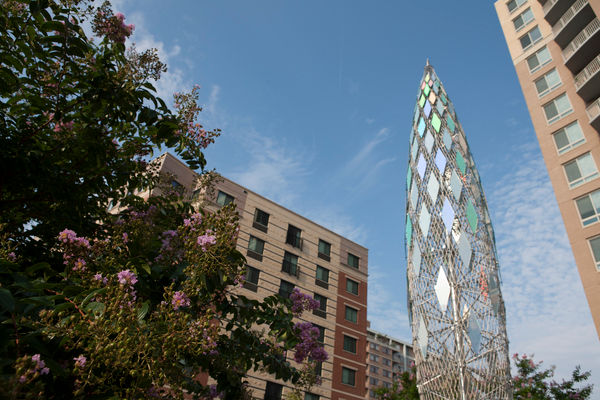
East/ West Beacon
East/West Beacon is an illuminated, 35ʼ high, freestanding sculpture, made from stainless steel and holographic glass, designed and created by Ray King to greet travelers on the East/West Highway in Silver Spring, MD. The vesica-shaped tensile sculpture is constructed of stainless steel and chromatic holographic glass, laminated with film that refracts brilliant color when struck by sunlight and exhibits a shimmering silvery iridescence, similar to luminous fish scales. The refractive nature of the glass as well as the stainless steel structure and cables, capture and reflect light and chromatics in an unpredictable and ever changing way.
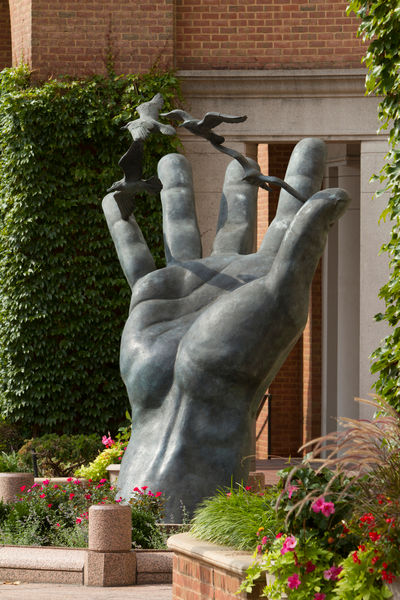
The Hand
Ray Kaskey worked with National Oceanic and Atmospheric Administration (NOAA) officials to create a sculpture that would reflect their mission. From early on, Kaskey conceived of a monumental work that would dominate the space in a dramatic way and envisioned the “Hand of Noah” as a pun on the biblical story of Noah releasing the doves on the arc. It became the “Hand of NOAA;” the doves turned into the seagulls that are part of the agency’s logo. The large bronze hand reaches its fingers towards the atmosphere releasing seagulls to the air, continuing the agency’s mission of recording and protecting the environment.
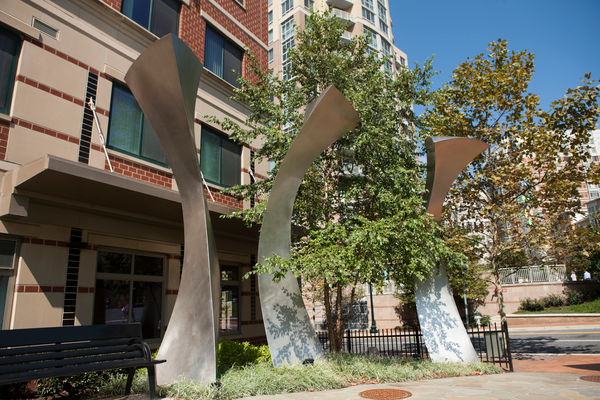
Lotus Columns
Mary Ann Mears’ sculpture in the garden in front of the Argent is a series of vertical elements along a curved path. The columns frame the pathway as one walks along it as well as playing off the geometry of the building behind it. The tops of the sculptures evoke triangular lotus blossoms as depicted in Egyptian relief sculpture and painting. Although Egyptian lotus columns are quite different in form and feeling; this piece references them. While Egyptian lotus columns are of enormous scale and massed in “forests;” this is more of a grove in graceful conversation. The forms of the column are quite simple being only three sided. They are asymmetrical and organic; the triangular twisting planes swell and recede while curving in space. There is latent energy expressed in the torque of the forms. While hard edged and made of stainless steel, which is a very rigid material, the columns have a kind of lyricism in the swaying forms and the softness of the burnished finish. In terms of expressive content, the columns are intended to add energy, lyricism and a bit of “joie de vivre” to the site while still being elegant.
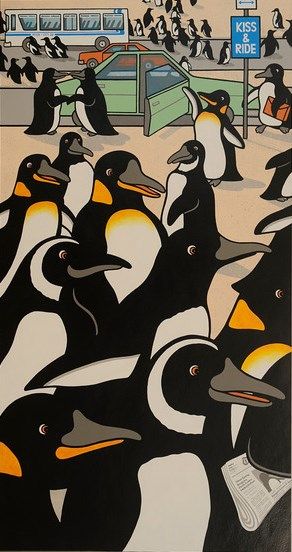
Penguin Rush Hour
The hustle and bustle of all the "suits" commuting in and out of the Silver Spring Metro Station are captured in artist Sally Callmer's 100-foot mural depicting penguins at a Metro stop. The mural, which Callmer created as the winner of a public art contest conducted by the Washington Metropolitan Area Transit Authority (WMATA), was originally to be displayed for one year. However WMATA later decided to purchase the work and display it permanently. Callmer took six months to paint the 25 plywood panels. Modeled from nature magazines, the penguins have become Silver Spring's unofficial downtown mascot (the official mascot is the acorn). The panels were taken down and restored partially through donations from Silver Spring residents and visitors. The Silver Spring Regional Center and Silver Spring Arts & Entertainment District raised funds through a "Pennies for Penguins" campaign. The campaign collected money from the public at the Silver Spring Swings summer concerts, the Silver Spring Jazz Festival, and the Montgomery County Thanksgiving Parade. Callmer restored the wood panels and they were stored by the Silver Spring Urban District for many years.
As a part of the construction of the Paul S. Sarbanes Transit Center, the Montgomery County Government had the panels scanned and printed onto aluminum metal panels by Dodge Chrome and installed by the Gable Company. The coated panels are weather and graffiti resistant, last longer than the original wood panels, and can be easily reproduced if they are damaged. Both the metal reproductions and the original wood panels are owned by Montgomery County and are maintained by the Arts and Humanities Council of Montgomery County.
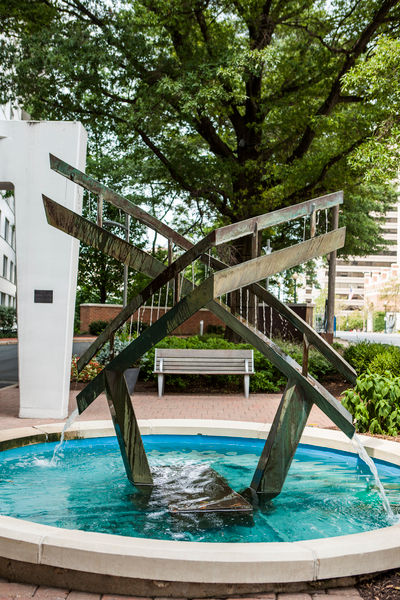
River Twist
As a former scientist who studied human visual perception, Barton Rubenstein has always been keenly interested in the visual forms of nature, especially those of water and motion. The works at The Blairs celebrate various patterns of these elements, treating them as sculptural forms unto themselves. The kinetic and water sculptures for The Blairs complex include the Blairs Sign Sculpture, a 50 foot water sculpture and main entrance sign.
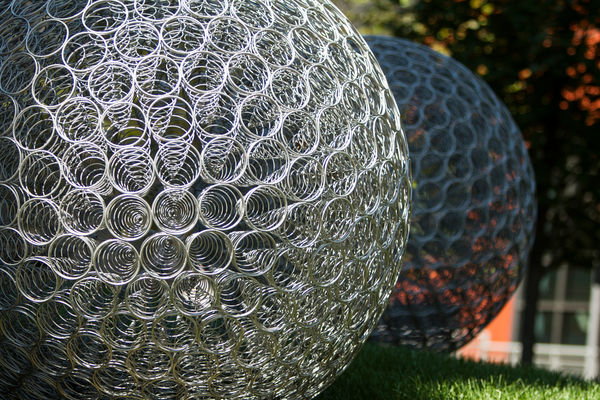
Sisyphus
Do you know your Greek myths? Cleverly entitled Sisyphus, Wendy Ross’s steel orbs grace the front of Cameron House. In mythology, King Sisyphus believed himself as clever as Zeus and as a punishment for his pride and trickery, was made to endlessly roll a huge boulder up a steep hill. Zeus enchanted the boulder to roll away from King Sisyphus before he reached the top which cursed him to an eternity of useless efforts and unending frustration.
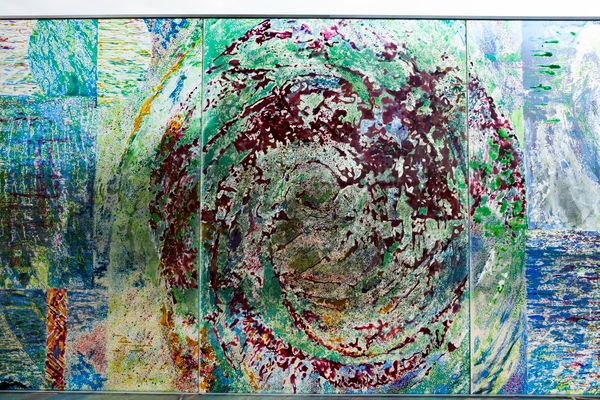
Transorma/Transforma
Located on the site of the former Blair Station Post Office stands artist Heidi Lipmann’s glass wall.
The piece is named after an automated mail sorting machine that was tried out at the Blair Station Post Office at a time when it handled one of the largest volumes of mail in the country. The name of the sorting machine was TRANSORMA, which stood for TRANsportation, SORting, Marchand, and Andriersen (the Dutch inventors). The 180 square foot wall was fabricated by Franz Mayer of Munich, and features hand painted cancellation stamps that are patterned in a series of circles and stripes. The multi-layered glass also used a silk screen process in the creation and was kiln fired to finish the piece. The artist, Heidi Lipmann has created many public art pieces in a variety of different mediums including terrazzo, mosaic, and glass painting.